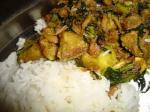|
In the heart of Northeast India lies Assam — a land known not just for its tea and natural beauty, but also for its distinct and time-honored culinary tradition. In earlier times, Assamese people were often referred to as “Khar Khuwa Asomiya,” highlighting their fondness for Khar — a unique alkaline dish made by filtering water through the ash of sun-dried plantain peels. This flavorful alkaline filtrate is the base for several iconic dishes that begin an Assamese meal.
The cuisine of Assam is beautifully influenced by the region’s diverse geography, indigenous roots, and local climate. Most dishes use easily available ingredients like duck meat, freshwater fish, raw papaya, banana flower, elephant apple (ou tenga), and an abundance of herbs.
Assamese cooking is a rich tapestry of styles, drawing from various ethnic and regional cultures:
Upper Assam cuisine is subtler in taste and bears strong oriental influences, including Mishing and Tai-Ahom elements.
Lower Assam, on the other hand, reflects the bold flavors of nearby Bengal and Bihar, resulting in spicier preparations.
One of the most distinct features of Assamese gastronomy is its Vedic-rooted balance of the six fundamental tastes, including alkaline and sour — a combination rarely found elsewhere in India. A traditional Assamese meal begins with Khar (alkaline dishes) and concludes with Tenga (sour curry), usually made with tangy ingredients like tomatoes, ou tenga (elephant apple), or lemon juice, and often includes fish.
Between these two anchor dishes, a range of preparations—fish curries, duck or pigeon meat, wild greens, and seasonal vegetables—are served. To conclude the meal, raw betel nut (tamul) is chewed as a digestive and cultural ritual.
Assamese cuisine isn't just food — it's an experience of seasonality, sustainability, and soulful heritage passed down through generations.
|






